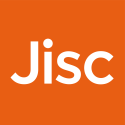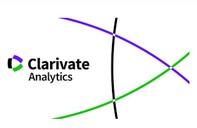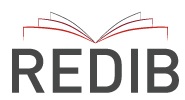¿Existe relación entre uso problemático de Internet y las respuestas de ansiedad social, obsesivo-compulsivas y el bienestar psicológico en adolescentes?
Abstract
ElusoexcesivodeInternetenadolescentesy jóvenesseconsidera relacionadocon problemasintrapersonaleseinterpersonales.Elobjetivode esta investigaciónfueestudiar larelaciónentreelusoproblemático deInternet,bienestar psicológicoy respuestasdeansiedadsocialy obsesivo-compulsivas.Lamuestraestuvo formadapor132varonesy 178mujeresdeedadescomprendidasentre16y 23añosque cursabanBachilleratoy estudiosuniversitarios.Losresultadosindicaronquelaedad influyóenlamayorpartedefactoresdelUsocompulsivodeInternet.Elsexoafectóa losnivelesdelusoproblemáticodeInternetsiendoloschicoslos quemayores puntuacionesalcanzaronenusocompulsivoyconsecuenciasnegativas.Seconfirmó una correlación significativaydirectaentreuso problemático deInternety respuestasde ansiedadsocialy obsesivo-compulsivas.Lospredictoresmásimportantedeluso problemático de Internet fueron el dominio del entorno,la ansiedad social y los síntomasobsesivo-compulsivos.Sepodría concluir,aunqueconcautela,quemientras que losjóvenesconansiedadsocialpodríanbuscar elusode internetcomounmediode interacciónplacentero, losjóvenesconsíntomasobsesivo-compulsivospodríanllegar a un uso excesivo como medio de eliminar la ansiedad compulsiva.Downloads
References
Alavi, S., Alaghemandan, H., Maracy, M., Jannatifard, F., Eslami, M., & Ferdosi, M. (2012). Impact of addiction to Internet on a number of psychiatric symptoms in students of Isfahan Universities, Iran, 2010. International Journal of Preventive Medicine, 3, 122-127.
Beidel, D., Turner, S., Stanley, M., & Dancu, C. (1989). The social phobia and anxiety inventory: concurrent and external validity. Behavior Therapy, 20, 417-427. doi:10.1016/S0005-7894(89)80060-7
Bernal, C. (2013). Tiempo online. Manuscrito no publicado. Universidad de Murcia.
Billieux, J., Gay, P., Rochat, L., & Van der Linden, M. (2010). The role of urgency and its underlying psychological mechanisms in problematic behaviours. Behaviour Research and Therapy, 48, 1085–1096. doi: 10.1016/j.brat.2010.07.008
Bipeta, R., Yerramilli, S., Karredla, A., & Gopinath, S. (2015). Diagnostic stability of Internet addiction in obsessive compulsive disorder: Data from a naturalistic one- year follow-up study. Innovation in Clinical Neuroscience, 12, 14-23.
Booth, S., Goodman, S., & Kirkup, G. (2010). Gender differences in learning and working with technology: social constructs and cultural contexts. Hershey: IGI Global.
Bringué, X & Sábada, C. (2009). La generación Interactiva en España. Niños y adolescentes antes las pantallas. Barcelona: Ariel
Çardak, M. (2013). Psychological wellbeing and Internet addiction among university students. Journal of Educational Technology, 12, 134-141.
Caplan, S. E. (2007). Relations among loneliness, social anxiety and problematic Internet use. Cyberpsychology & Behavior, 10, 234-242. doi: 10.1089/cpb.2006.996
Caplan, S. E. (2010). Theory and measurement of generalized problematic Internet use: A two-step approach. Computers in Human Behavior, 26, 1089-1097. doi: 10.1016/j.chb.2010.03.012
Casale, S., Lecchi, S., & Fioravanti, G. (2015). The association between psychological well-being and problematic use of Internet communicative services among young people. The Journal of Psychology, 149, 480-497. doi:10.1080/00223980.2014.905432
Çuadar, C. (2012). Exploration of problematic Internet use and social interaction anxiety among Turkish pre-service teachers. Computers and Education, 59, 173-181. doi: 10.1016/j.compedu.2011.12.029
Dalbudak, E., Evren, C., Aldemir, S., Taymur, I., Evren, B. & Topcu, M. (2015). The impact of sensation seeking on the relationship between attention deficit/hyperactivity symptoms and severity of Internet addiction risk. Psychiatry Research, 228(1), 156–161. doi: 10.1016/j.psychres.2015.04.035
Dhir, A., Chen, S., & Nieminen, M. (2015). Psychometric validation of the Chinese compulsive Internet use scale (CIUS) with Taiwanese high school adolescents. The Psychiatric Quarterly, 86, 581-596. doi:10.1007/s11126-015-9351-9
Díaz, D., Rodríguez-Carvajal, R., Blanco, A., Moreno-Jiménez, B., Gallardo, I., Valle, C., & Carbajal, R. (2006). Adaptación española de las escalas de bienestar psicológico de Ryff. Psicothema, 18, 572-577.
Durkee, T., Kaess, M., Carli, V., Parzer, P., Wasserman, C., Floderus, B., ...Wasserman, D. (2012). Prevalence of pathological Internet use among adolescents in Europe: demographic and social factors. Addiction, 107, 2210-2222. doi: 10.1111/j.1360-0443.2012.03946
Echeburúa, E., & Requesens, A. (2012). Adicción a las redes sociales y nuevas tecnologías en niños y adolescentes. Madrid: Pirámide.
Esfandiari, N. (2014, Febrero). Purposes of Online communication and social anxiety. 3rd International Conference on Behavioral Science, At Kish, Iran. Retrieved from https://www.researchgate.net/publication/284355003_Purposes_of_Online_comm unication_and_social_anxiety
Gámez-Guadix, M., Calvete, E., Orue, I., & Las Hayas, C. (2014). Problematic Internet use and problematic alcohol use from the cognitive-behavioral model: A longitudinal study among adolescents. Addictive Behaviors, 40, 109-114. doi: 10.1016/j.addbeh.2014.09.009
Gámez-Guadix, M., Orue, I. & Calvete, E. (2013). Evaluation of the cognitive-behavioral model of generalized and problematic Internet use in Spanish adolescents. Psicothema, 25(3), 299–306. doi: 10.7334/psicothema2012.274
Gomes, F., & Sendín-Gutiérrez, J. C. (2014). Internet as a haven and social shield: problematic uses of the network by young Spaniards. Comunicar, 22, 45-53. doi: 10.3916/C43-2014-04
Gómez, P., Rial, A., Braña, T., Valera, J., & Barreiro, C. (2014). Evaluation and early detection of problematic Internet use in adolescents. Psicothema, 26, 21-26. doi: 10.7334/psicothema2013.109
Ha, J. H., Yoo, H. J., Cho, I. H., Chin, B., Shin, D., & Kim, J. H. (2006). Psychiatric comorbidity assessed in Korean children and adolescents who screen positive for Internet addiction. The Journal of Clinical Psychiatry, 67, 821-826.
Haddadain, F., Abedin, A., & Monirpoor, N. (2010). Appraisal of personality, family structure and gender in predicting problematic use of Internet. Procedia - Social and Behavioral Sciences, 5, 850-854. doi: 10.1016/j.sbspro.2010.07.197
Hodgson, R. J., & Rachman, S. (1977). Obsessional-compulsive complaints. Behaviour Research and Therapy, 15, 389-395. doi: 10.1016/0005-7967(77)90042-0
Ko, C. H., Liu, T. L., Wang, P. W., Chen, C. S., Yen, C. F., & Yen, J. Y. (2014). The exacerbation of depression, hostility, and social anxiety in the course of Internet addiction among adolescents: a prospective study. Comprehensive Psychiatry, 55, 1377-1384. doi: 10.1016/j.comppsych.2014.05.003
Koo, H. J., & Kwon, J. H. (2014). Risk and protective factors of Internet addiction: a meta-analysis of empirical studies in Korea. Yonsei Medical Journal, 55, 1691-1711. doi:10.3349/ymj.2014.55.6.1691
Kormas, G., Critselis, E., Janikian, M., Kafetzis, D., & Tsitsika, A. (2011). Risk factors and psychosocial characteristics of potential problematic and problematic Internet use among adolescents: a cross-sectional study. BMC Public Health, 11, 595-602. doi: 10.1186/1471-2458-11-595
Lai, C. M., Mak, K. K., Watanabe, H., Jeong, J., Kim, D., Bahar, N., … Cheng, C. (2015). The mediating role of Internet addiction in depression, social anxiety, and psychosocial well-being among adolescents in six Asian countries: a structural equation modelling approach. Public Health, 129, 1224-1236. doi: 10.1016/j.puhe.2015.07.031
Lam, L. (2014). Risk factors of Internet addiction and the health effect of internet addiction on adolescents: a systematic review of longitudinal and prospective studies. Current Psychiatry Reports, 16, 1-9. doi:10.1007/s11920-014-0508-2
LaRose, R., Lin, C., & Eastin, M. (2003). Unregulated Internet usage: addiction, habit, or deficient self-regulation. Media Psychology, 5, 225-253. doi: 10.1207/S1532785XMEP0503_01
Lee, B., & Stapinski, L. (2012). Seeking safety on the Internet: relationship between social anxiety and problematic Internet use. Journal of Anxiety Disorders, 26, 197-205. doi: 10.1016/j.janxdis.2011.11.001
Mei, S., Yau, Y. H. C., Chai, J., Guo, J., & Potenza, M. N. (2016). Problematic Internet use, well-being, self-esteem and self-control: Data from a high-school survey in China. Addictive Behaviors, 61, 74-79. doi: 10.1016/j.addbeh.2016.05.009
Müller, K. W., Dreier, M., Beutel, M. E., Duven, E., Giralt, S., & Wölfling, K. (2016). A hidden type of Internet addiction? Intense and addictive use of social networking sites in adolescents. Computers in Human Behavior, 55, 172-177. doi: 10.1016/j.chb.2015.09.007
Murali, V., & George, S. (2007). Lost online: An overview of Internet addiction. Advances in Psychiatric Treatment, 13, 24-30. doi:10.1192/apt.bp.106.002907
Odaci, H., & Çikrikçi, Ö. (2014). Problematic Internet use in terms of gender, attachment styles and subjective well-being in university students. Computers in Human Behavior, 32, 61-66. doi: 10.1016/j.chb.2013.11.019
Pontes, H. M., Szabo, A., & Griffiths, M. D. (2015). The impact of Internet-based specific activities on the perceptions of internet addiction, quality of life, and excessive usage: A cross-sectional study. Addictive Behaviors Reports, 1, 19-25. doi: 10.1016/j.abrep.2015.03.002
Rosen, L., Whaling, K., Rab, S., Carrier, L., & Cheever, N. (2013). Is Facebook creating ‘‘iDisorders’’? The link between clinical symptoms of psychiatric disorders and technology use, attitudes and anxiety. Computers in Human Behavior, 29, 1243-1254. doi: 10.1016/j.chb.2012.11.012
Sasmaz, T., Oner, S., Kurt, A. O., Yapici, G., Yazici, A. E., Bugdayci, R., & Sis, M. (2013). Prevalence and risk factors of Internet addiction in high school students. The European Journal of Public Health, 24, 15-20. doi.org/10.1093/eurpub/ckt051
Shepherd, R., & Edelmann, R. (2005). Reasons for Internet use and social anxiety. Personality and Individual Differences, 39, 949-958. doi: 10.1016/j.paid.2005.04.001
Sim, T., Gentile, D. A., Bricolo, F., Serpelloni, G., & Gulamoydeen, F. (2012). A conceptual review of research on the pathological use of computers, video games, and the Internet. International Journal of Mental Health and Addiction, 10, 748-769. doi: 10.1007/s11469-011-9369-7
Valkenburg, P., & Peter, J. (2007). Online communication and adolescent well-being testing the stimulation versus the displacement hypothesis. Journal of Computer Mediated Communication, 12, 1169-1182. doi: 0.1111/j.1083-6101.2007.00368.x
Valkenburg, P., & Peter, J. (2009). Social consequences of the Internet for adolescents: A decade of research. Current Directions in Psychological Science, 18, 1-5. doi: 10.1111/j.1467-8721.2009.01595.x
Wanajak, K. (2011). Internet use and its impact on secondary school students in Chiang Mai, Thailand (Doctoral Thesis). Edith Cowan University, Australia.
The works published in this journal are subject to the following terms:
1. The Publications Service of the University of Murcia (the publisher) retains the property rights (copyright) of published works, and encourages and enables the reuse of the same under the license specified in paragraph 2.
© Servicio de Publicaciones, Universidad de Murcia, 2022
2. The works are published in the online edition of the journal under CC BY-SA 4.0 license, a Creative Commons Reconocimiento-CompartirIgual 4.0 (legal text). You are free to:
- Share: copy and redistribute the material in any medium or format for any purpose, even commercially.
- Adapt: remix, transform, and build upon the material for any purpose, even commercially.
The licensor cannot revoke these freedoms as long as you follow the license terms, under the following terms:
- Attribution: You must give appropriate credit , provide a link to the license, and indicate if changes were made . You may do so in any reasonable manner, but not in any way that suggests the licensor endorses you or your use.
- ShareAlike: If you remix, transform, or build upon the material, you must distribute your contributions under the same license as the original.
No additional restrictions: You may not apply legal terms or technological measures that legally restrict others from doing anything the license permits.
This work is licensed under a Creative Commons Attribution-ShareAlike 4.0 International License.
3. Conditions of self-archiving. Is allowed and encouraged the authors to disseminate electronically pre-print versions (version before being evaluated and sent to the journal) and / or post-print (version reviewed and accepted for publication) of their works before publication, as it encourages its earliest circulation and diffusion and thus a possible increase in its citation and scope between the academic community. RoMEO Color: Green.















